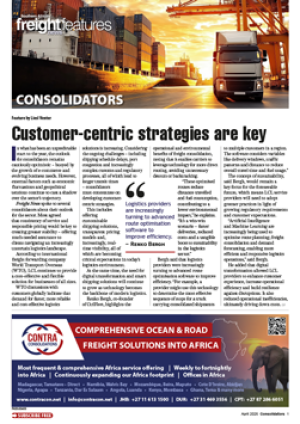Southern Africa’s logistics sector is undergoing a rapid digital transformation, with transport operators moving beyond simply recognising the need for technology to actively testing and implementing digital solutions. Some are already switching between providers as they seek the most effective tools to enhance efficiency and reduce costs.“We are at the early stage of a technology boom within the transport sector, with the emergence of multiple solution providers locally, along with global suppliers making inroads,” said Renko Bergh, co-founder of CtrlFleet. “The need for true digital impact and creating competitive advantages through technology is now.”Bergh warns that sustaining the momentum is key. “The challenge is for transport operators to maintain the utilisation of solutions. They need to avoid the potential pitfall of leapfrogging their own expectations and keep on measuring improvements.”Logistics remains a critical enabler of economic growth, especially as South Africa eyes a 3% growth target. However, the sector continues to grapple with high transport costs, ineffective port operations and failing infrastructure. Cost-effective transport solutions are more important than ever, and digital innovation is seen as a vital step forward. The National Logistics Crisis Committee has echoed the need for technology-driven transformation, but the real shift will come from operators embedding technology into their operations, rather than treating it as an add-on.“The past few years have seen early adopters make inroads with next-generation digital solutions, with the sector now experiencing mass adoption. This has empowered many role-players to move from manual or very basic capturing solutions to interactive, integrated solutions that provide current visibility. From blind to see,” said Bergh. “Those same first-time adopters are again moving a step forward. They are now going from real-time tracking, which has become standard, to being more proactive and predictive in their operations. In other words, from seeing to now anticipating, using data.”According to Bergh, this results in the usage of solutions that can analyse routines and prompt exceptions, enabling proactive future scenario planning.South African operators have long viewed their international counterparts as being more technologically advanced. However, the country’s unique challenges have accelerated the adoption of digital solutions, putting local innovation on par with – if not ahead of – global trends.He said that for many years, local operators had been made to believe, and in many cases it was true, that international counterparts were more technologically advanced. “But, as we’ve seen in other industries, the challenges in South Africa have fast-tracked the push for change, and technology adoption has followed the same trajectory.”Today, locally developed solutions are not only tailored to the region’s specific needs but are also driving new levels of integration and automation. “Now, we are starting to see South African software providers gaining interest from international operators, thanks to their ability to develop and support systems rapidly,” said Bergh. LV

